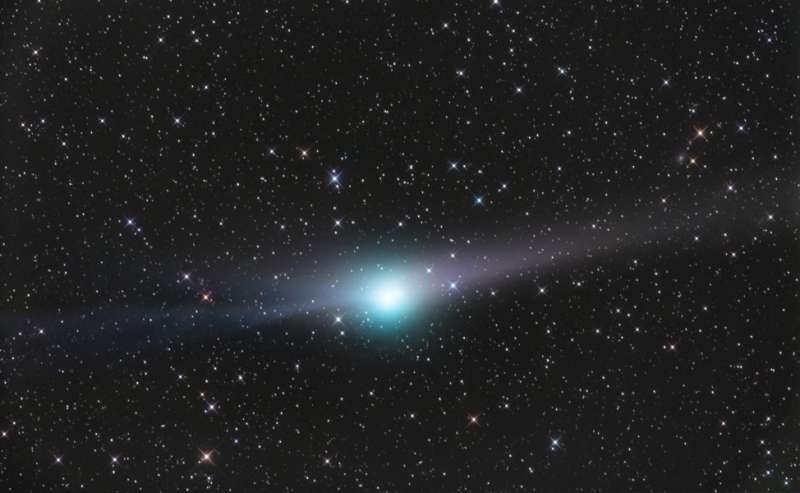Credit & Copyright: Olivier Sedan
(Sirene Observatory)
Explanation:
Remarkable comet Garradd (C2009/P1) has come to be known for two
distinctive tails.
From the perspective of earthbound comet watchers the tails are
visible on opposite sides of its greenish coma.
Seen here in a telescopic view, the
recognizable dust tail fans out to the right, trailing the comet nucleus
in its orbit.
Streaming away from the sunward direction,
a familiar bluish ion tail sweeps to the left.
But the comet also seems to have, at least temporarily,
sprouted a second ion tail recorded in
this
image from February 24.
Other comet imagers have
recently
captured changing
structures
in Garradd's
ion tail created as the plasma is
buffeted by the
magnetic fields in the solar wind.
Now moving more quickly
through northern skies,
on March 5th comet Garradd will reach its closest approach to
planet Earth, about 10.5 light-minutes distant.
1999 2000 2001 2002 2003 2004 2005 2006 2007 2008 2009 2010 2011 2012 2013 2014 2015 2016 2017 2018 2019 2020 2021 2022 2023 2024 2025 |
Январь Февраль Март Апрель Май Июнь Июль Август Сентябрь Октябрь Ноябрь Декабрь |
NASA Web Site Statements, Warnings, and Disclaimers
NASA Official: Jay Norris. Specific rights apply.
A service of: LHEA at NASA / GSFC
& Michigan Tech. U.
|
Публикации с ключевыми словами:
кометы - кометные хвосты
Публикации со словами: кометы - кометные хвосты | |
См. также:
Все публикации на ту же тему >> | |
